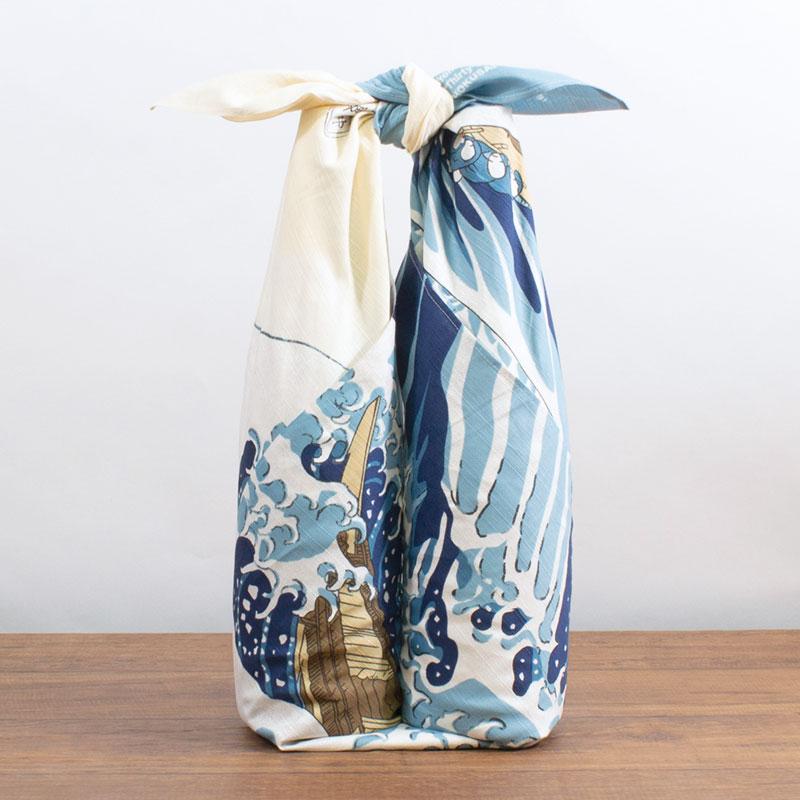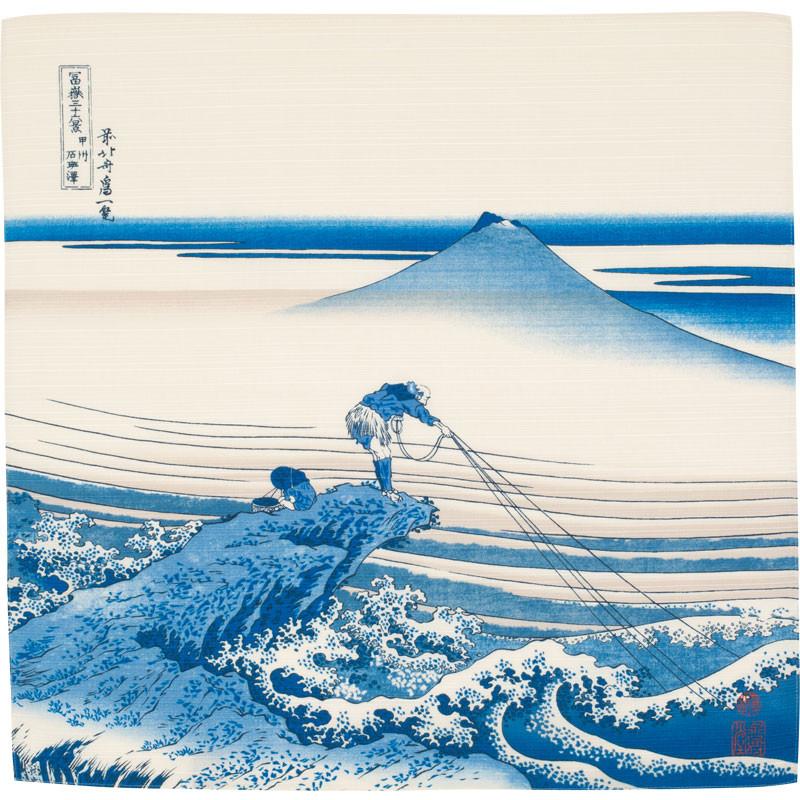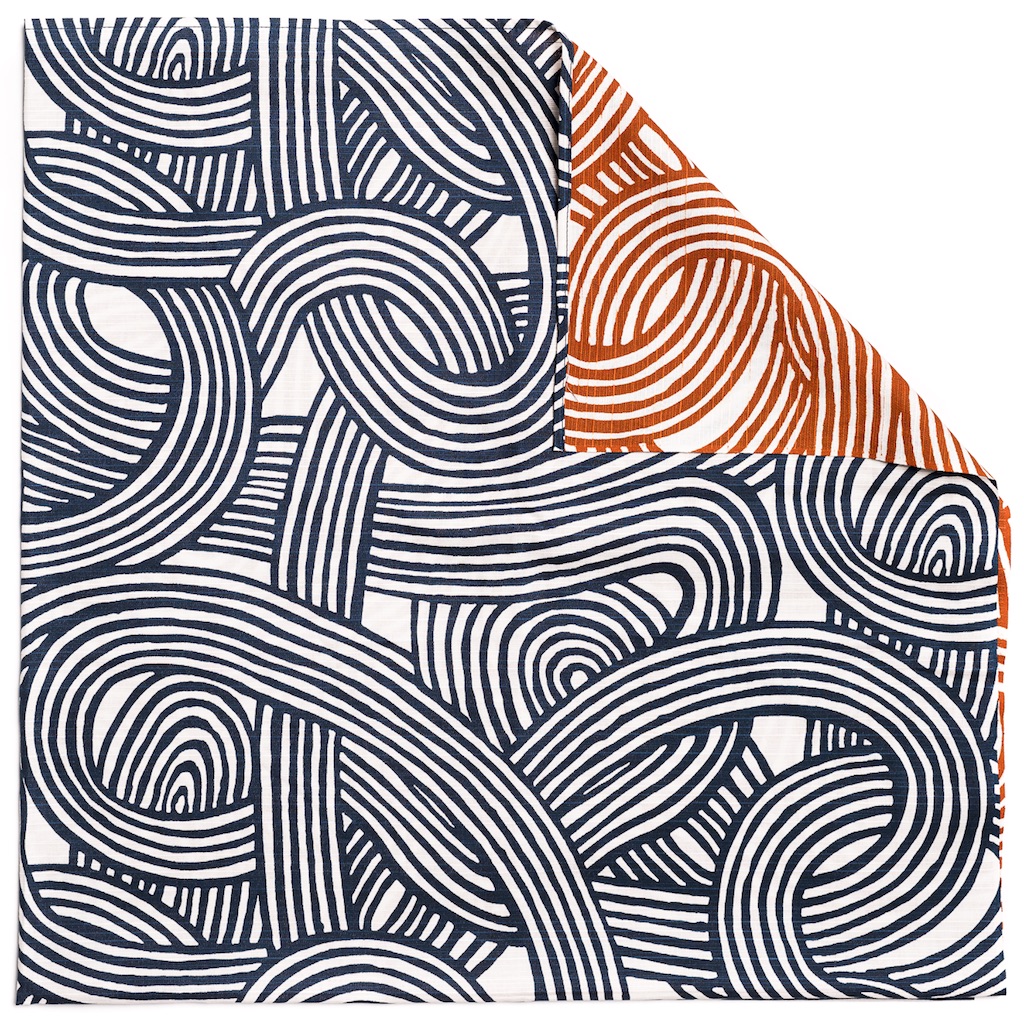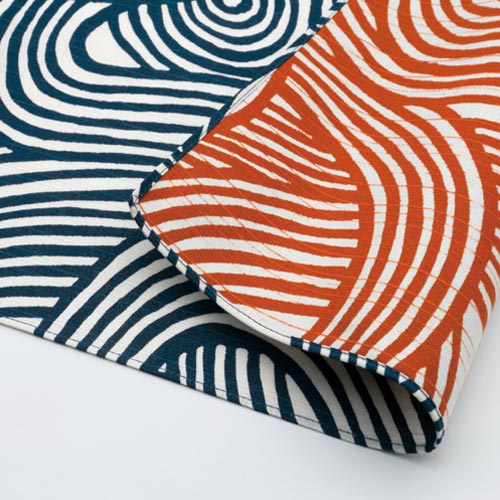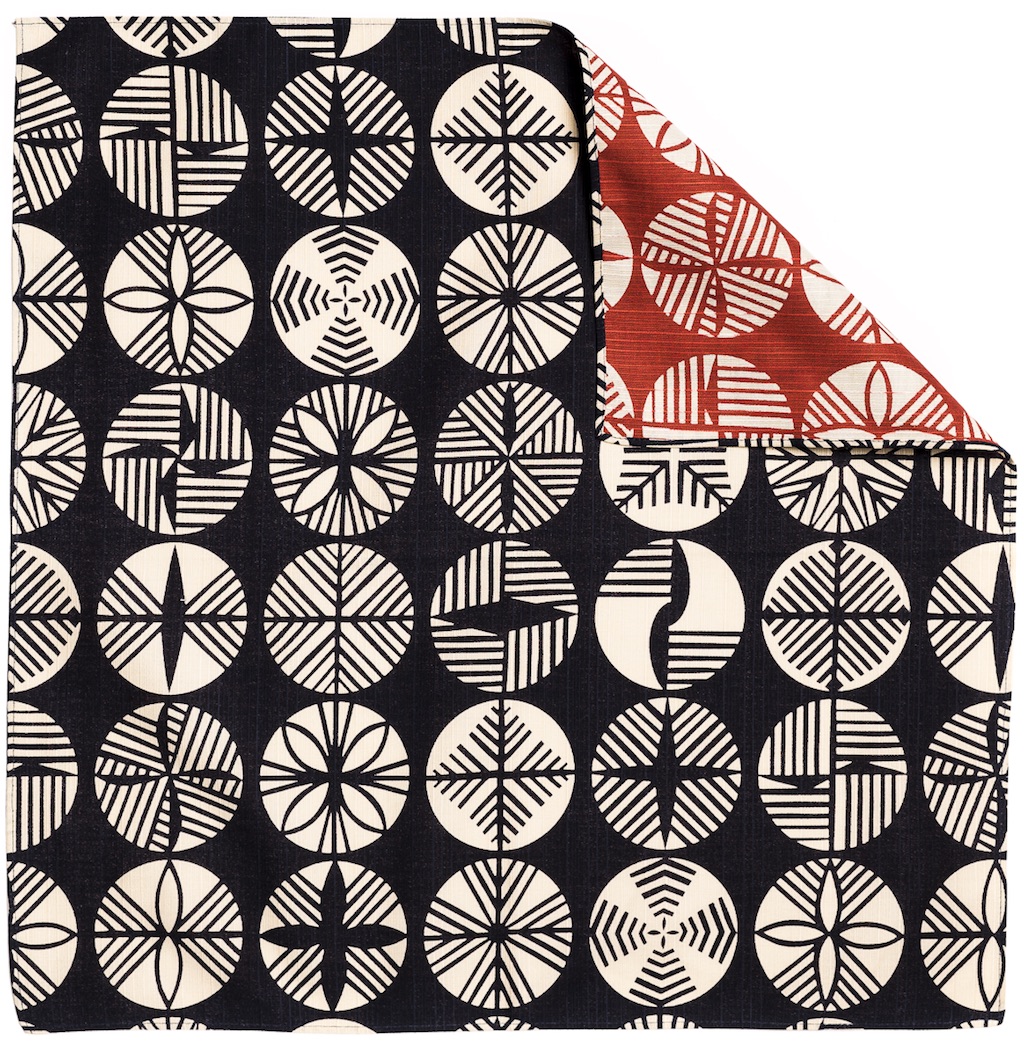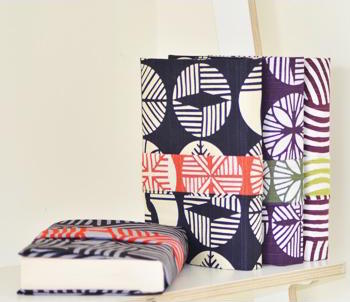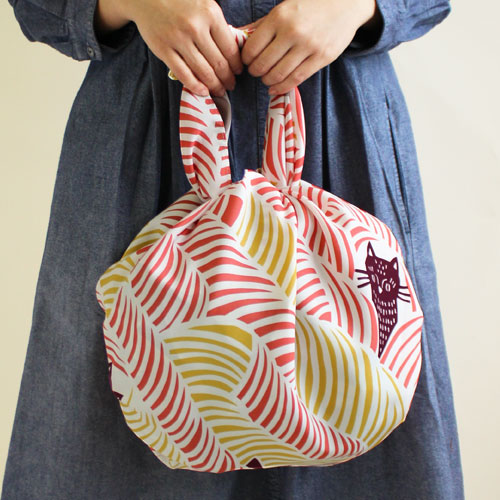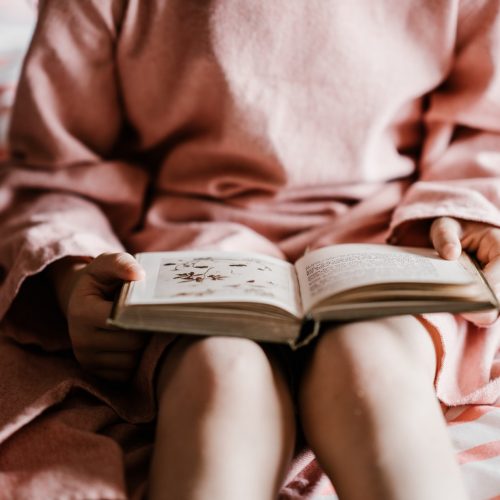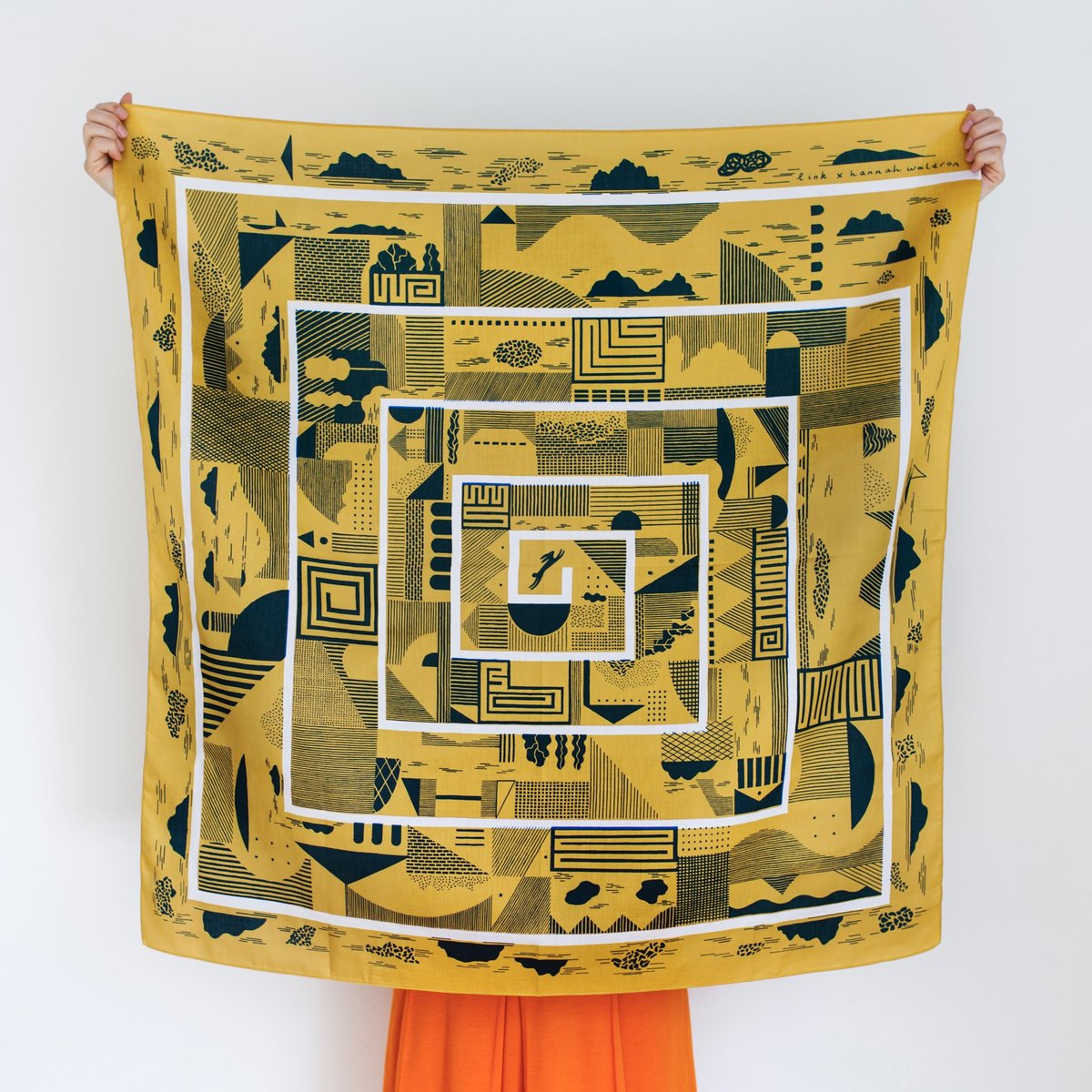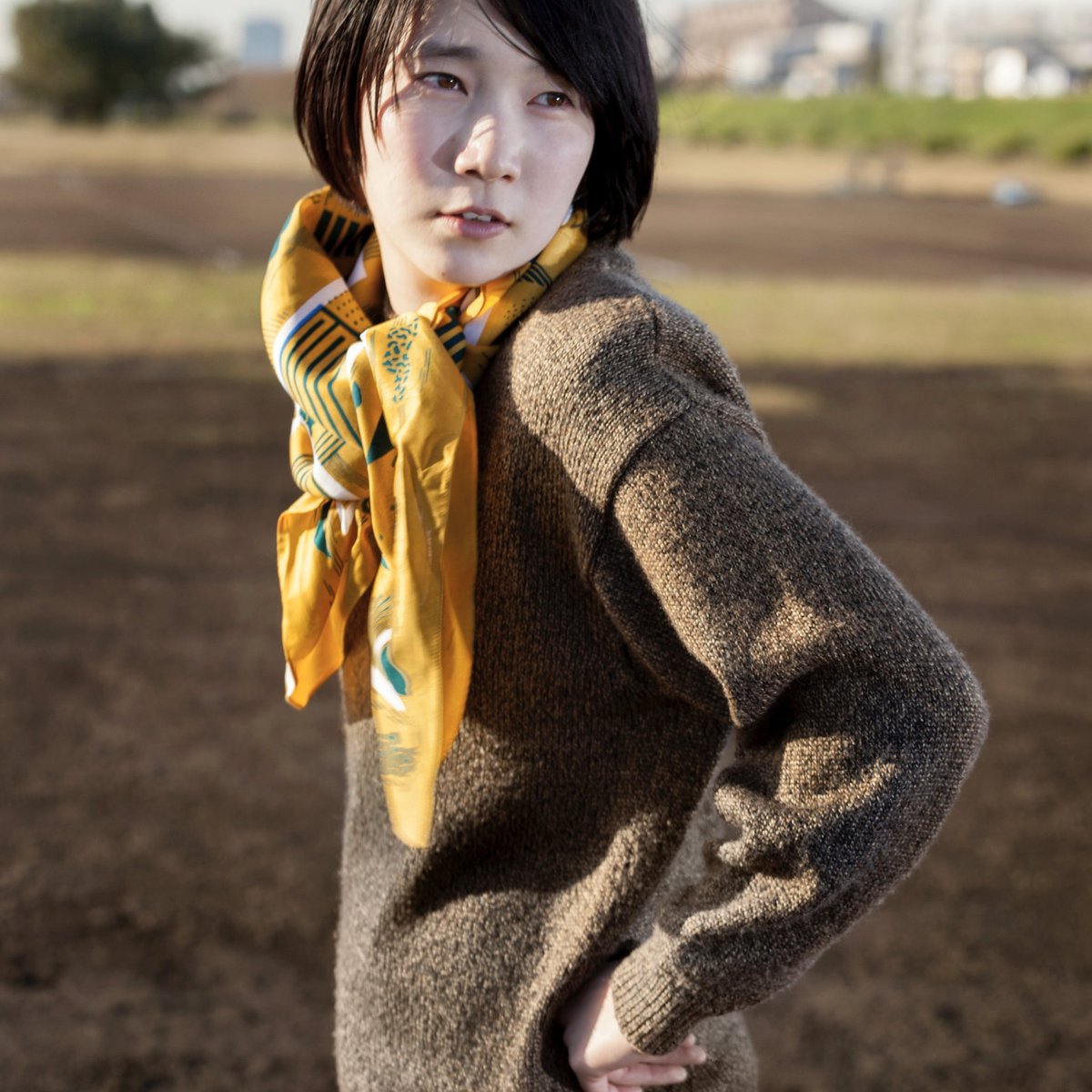We’ve collected some insightful impressions from our Japanese Furoshiki partners to showcase the remarkable process of making traditional Japanese Furoshiki. It all starts with a simple thread…
Weaving the fabric
There are many techniques for weaving fabrics that result is different types of towels with distinct surface, structure and sturdiness.
Some of the more sturdy Furoshiki such as the Isa-Monyo collection use cotton shantung, a fabric that is woven similarly like silk, but with slub cotton yarn instead, which gives it a rough, uneven surface.
Some softer and more delicate towels are created from cotton satin, such as the Link Furoshiki collection, which makes them very gentle on the skin and lightweight.
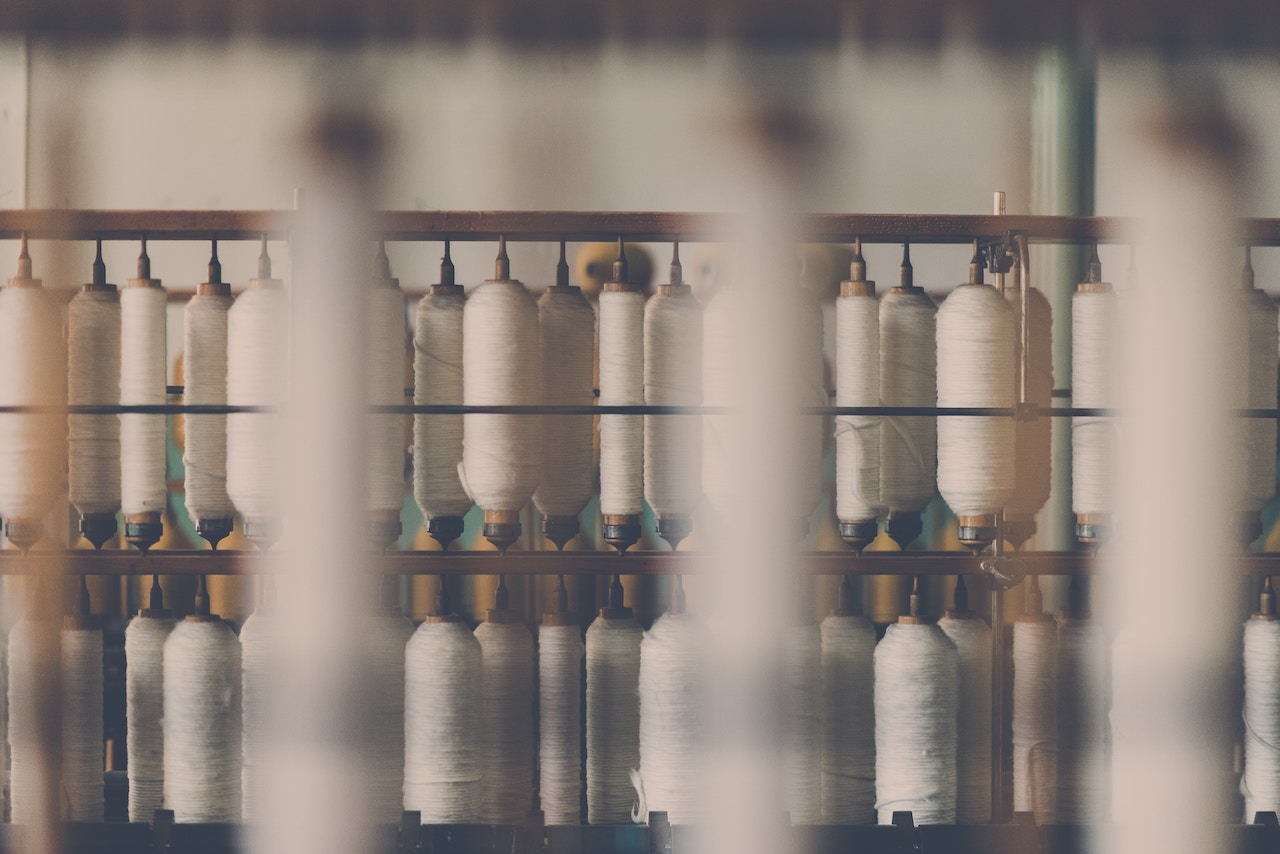 Cotton reels ready for weaving
Cotton reels ready for weaving
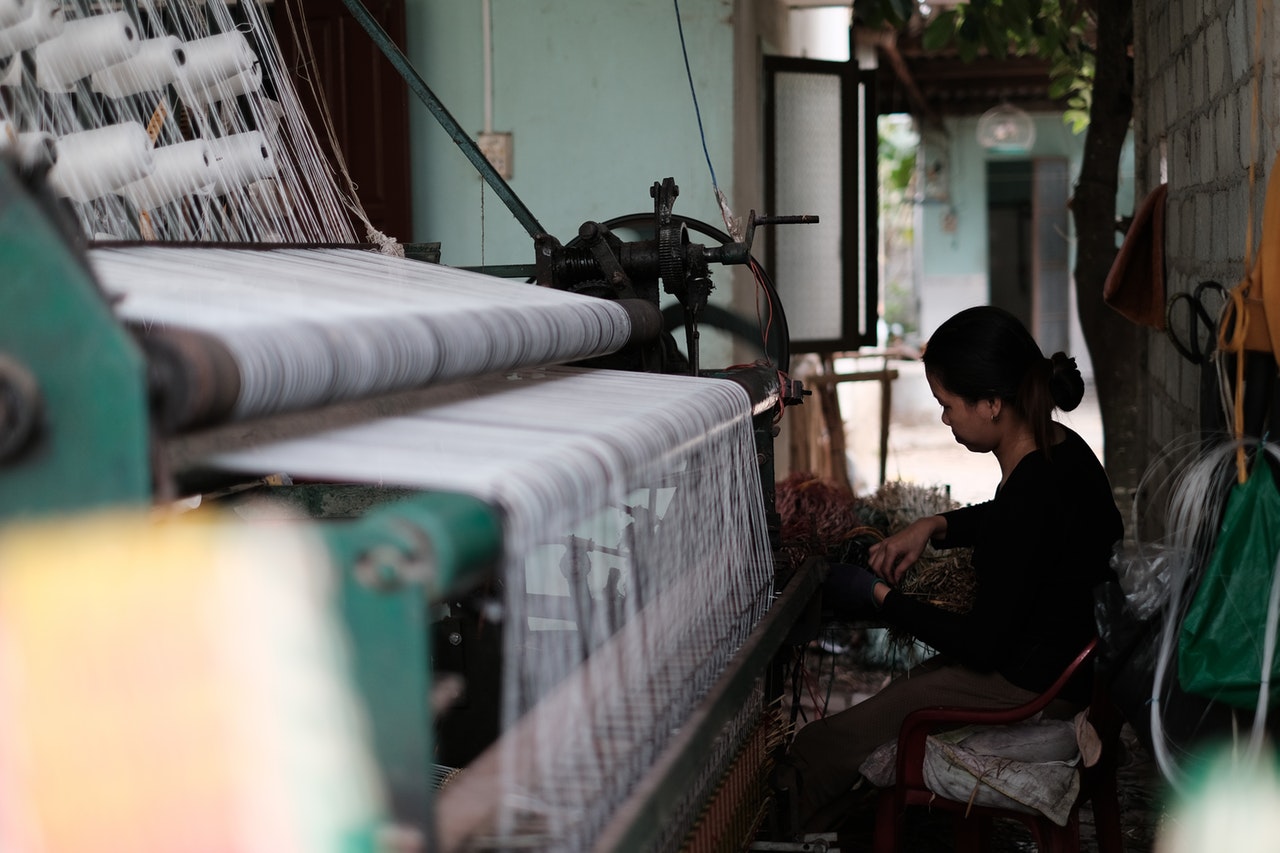 Weaving the threads
Weaving the threads
The fabric is produced in small workshops, where the cotton is spun, woven and cut to big sheets. Many of the weaving techniques used are traditional Japanese, passed on for generations.
Selecting and designing an artwork
The Japanese symbolism has to date a big influence on the modern culture. Many of the traditional Japanese symbols are therefore printed on Furoshiki, and have generally auspicious meanings such as welfare, longevity or luck. But also famous artworks, like the fantastic paintings from Katsushika Hokusai, can be found printed on Furoshiki.
Since the towels are printed using the stencil printing techniques, famous stencils from renowned stencil artist are also used to create stunning patterns and designs. One of the most influential artist in traditional stencil printing, is probably Kunio Isa, whose stencil designs can be found on many modern Furoshiki designs.
Other modern designs are created in collaboration with stencil artist and designers to create fashionable bags and pouches. The Japanese Furoshiki tradition has been revived with this movement of modern design and opened the market to the world.
Creating the stencil
Once the perfect artwork has been selected, is has to been transferred to a stencil template, that is later used for dyeing the textiles. The stencil is a negative of the artwork itself, which is produced by a specialized factory. Each stencil can only be used for one color, for a multi-color Furoshiki several stencils are necessary, that allow to color different parts of the towel.
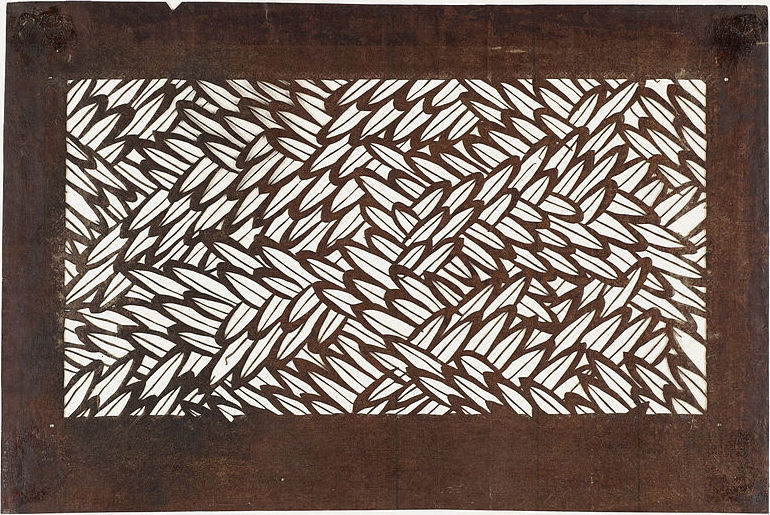 Ise katagami Stencil printing template with bamboo leaves
Ise katagami Stencil printing template with bamboo leaves
The stencils are manufactured very precise within few millimeters, to allow for an accurate print later on. In Japan, they are traditionally created from thick paper, this old craft is called Ise katagami, which is designated one of the Important Intangible Cultural Properties of Japan. It is partially because of the Ise katagami stencil craft what makes the original Japanese Furoshiki stand out in beauty and design like no others.
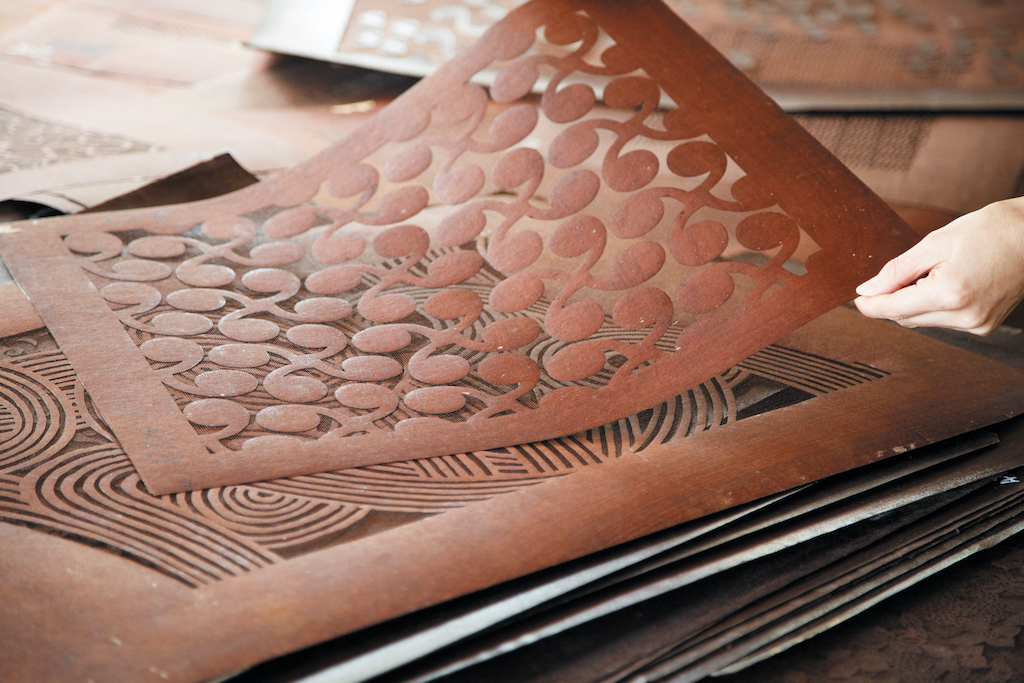 Original Ise katagami stencil printing templates used by Musubi
Original Ise katagami stencil printing templates used by Musubi
Stencil printing
The stencils are sent to the printing company. They prepare the fabric and color to print the Furoshiki. The colors are mixed by hand based on the Pantone system, which requires great experience to achieve consistent colors.
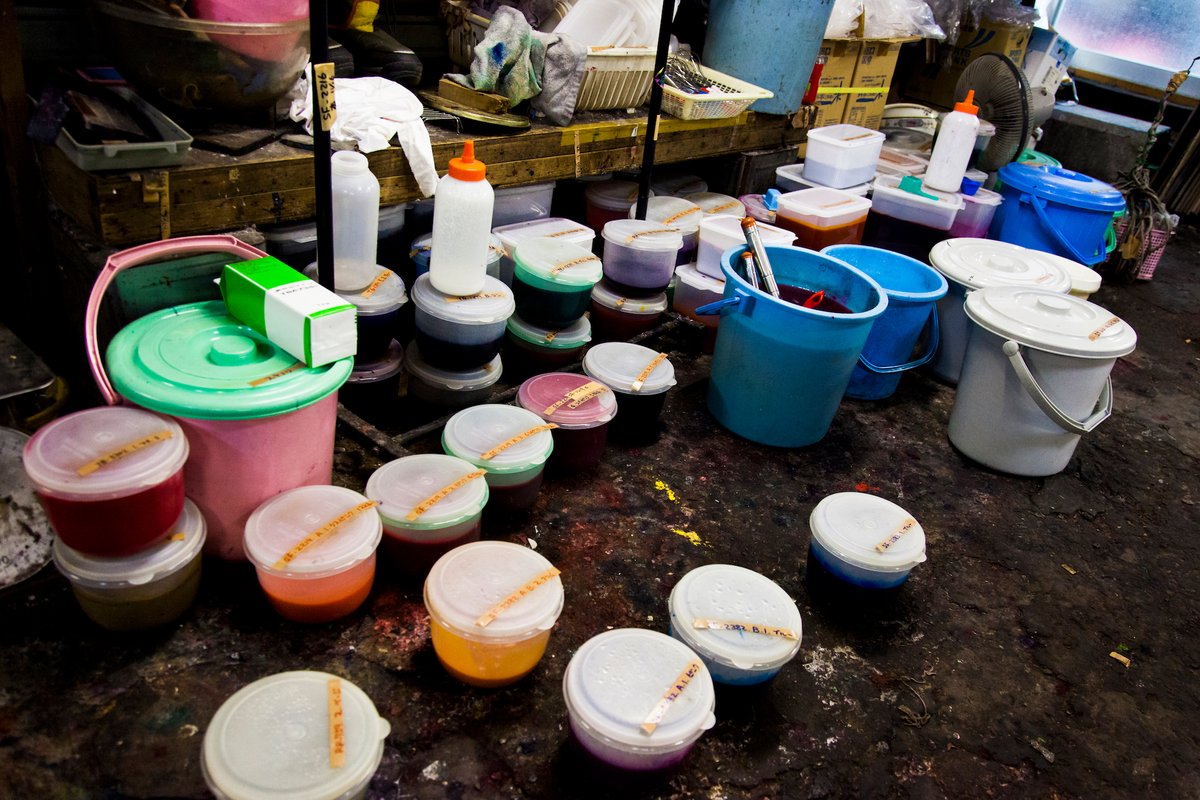 Base colors used by in Link’s Furoshiki factory
Base colors used by in Link’s Furoshiki factory
The towels are secured and stretched in a special frame that makes sure the fabric doesn’t move during printing. The color is added to the printing form and stencil. Each towel is printed individually by hand.
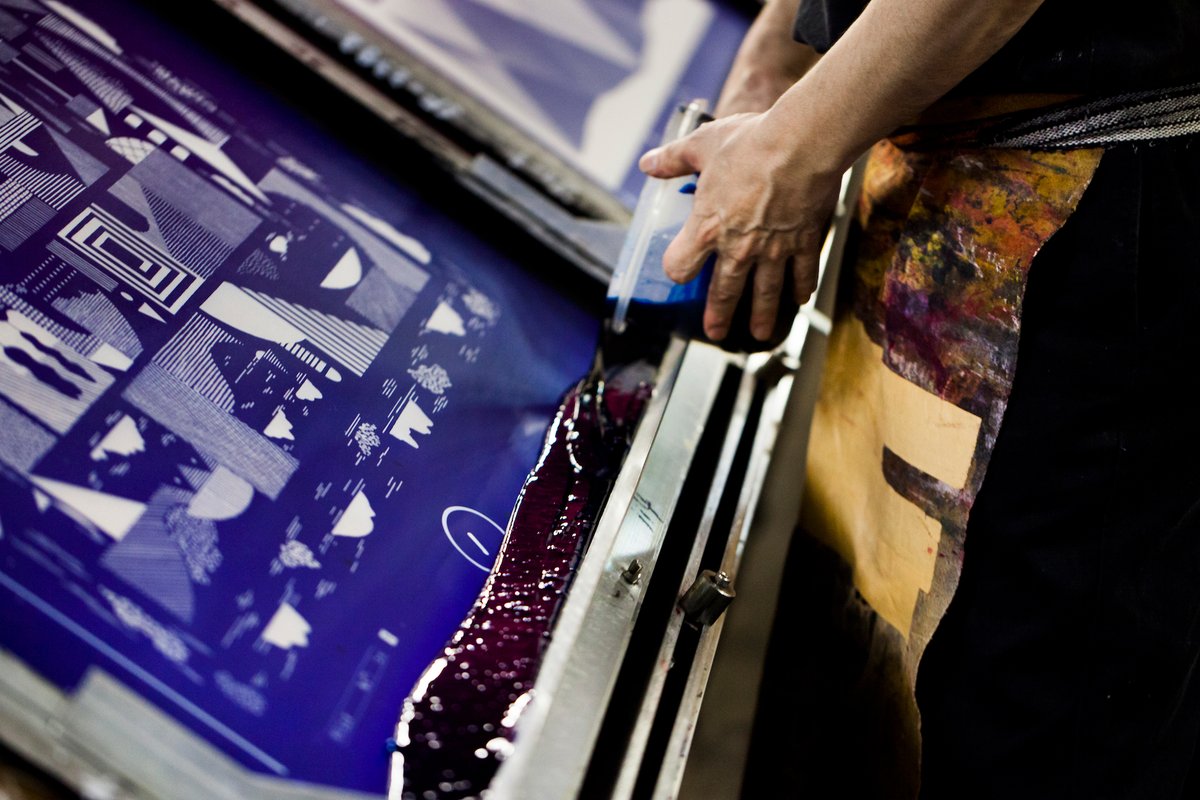 Printing process to create a Furoshiki Link Maze
Printing process to create a Furoshiki Link Maze
The color is spread across towel, the stencil will make sure that the color only touches the fabric in certain areas. This process is quite difficult and requires great hand working skills. All towels are printed using this process by hand by the printing artisans.
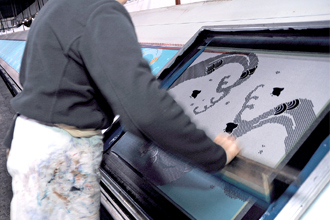
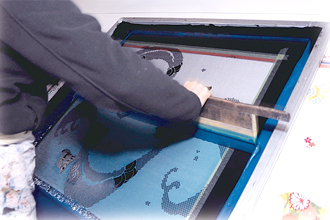
This process is repeated for each color with a different stencil, the towels are dried briefly between different color steps.
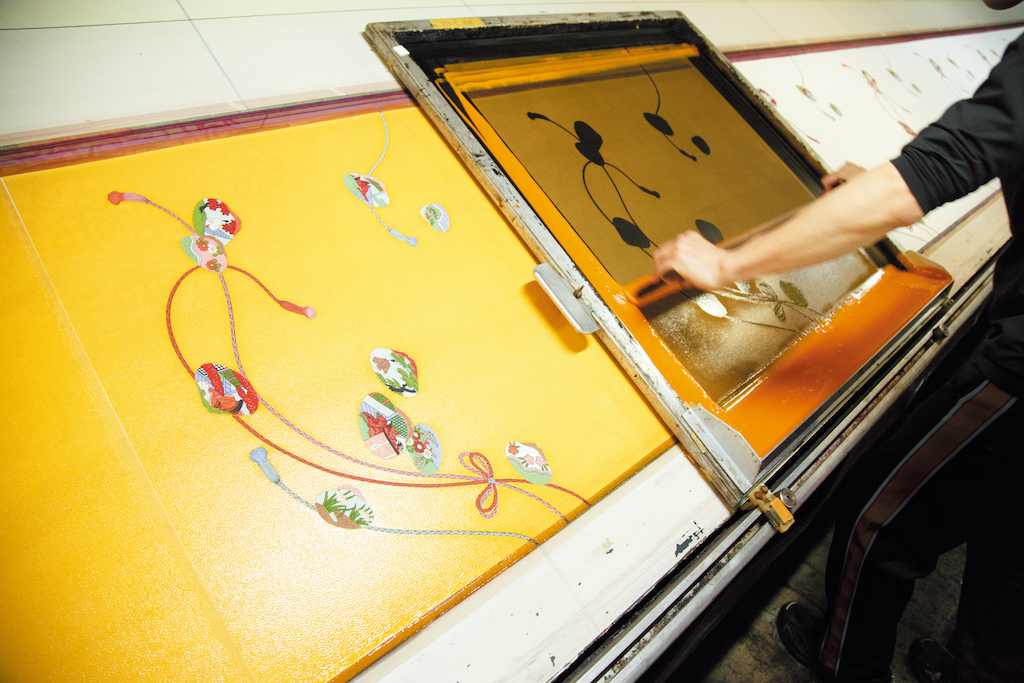 Stencil printing process of a Musubi Furoshiki
Stencil printing process of a Musubi Furoshiki
Some Furoshiki are printed on both sides (reversible), for these towwels the whole process is repeated on the other side of the fabric (after drying). The patterns on both sides match exactly, which is very difficult to achieve. This reversible printing process is a speciality of the Japansese printing factory.
Drying, ironing and cutting
After the dyeing process is completed, the cloths are washed in water to settle the colors and then dried thoroughly.
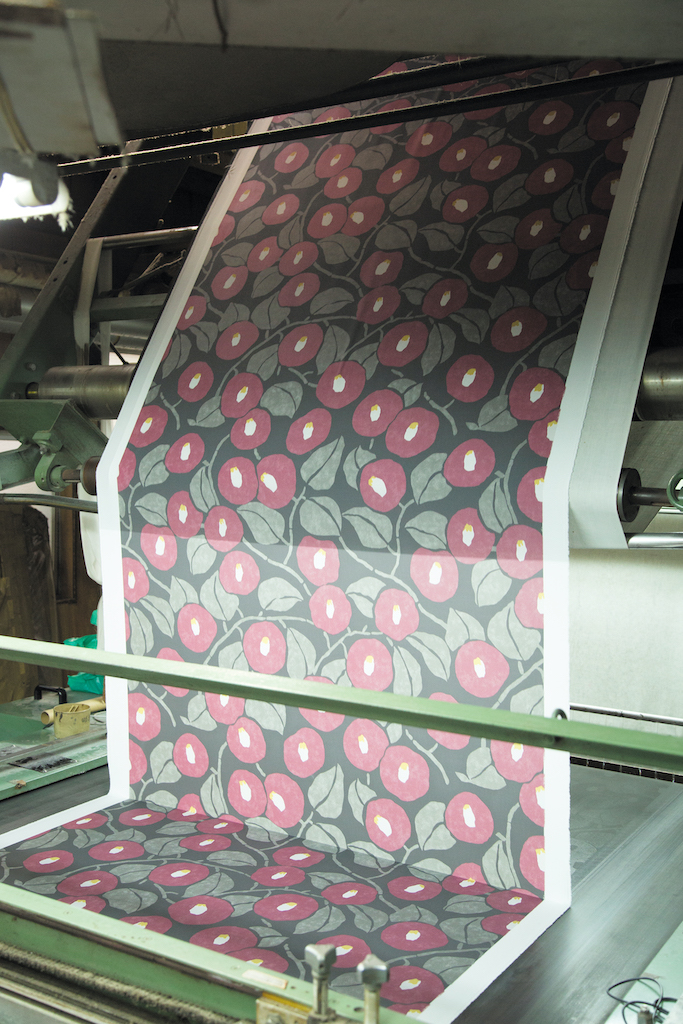 Furoshiki Yumeji before cutting
Furoshiki Yumeji before cutting
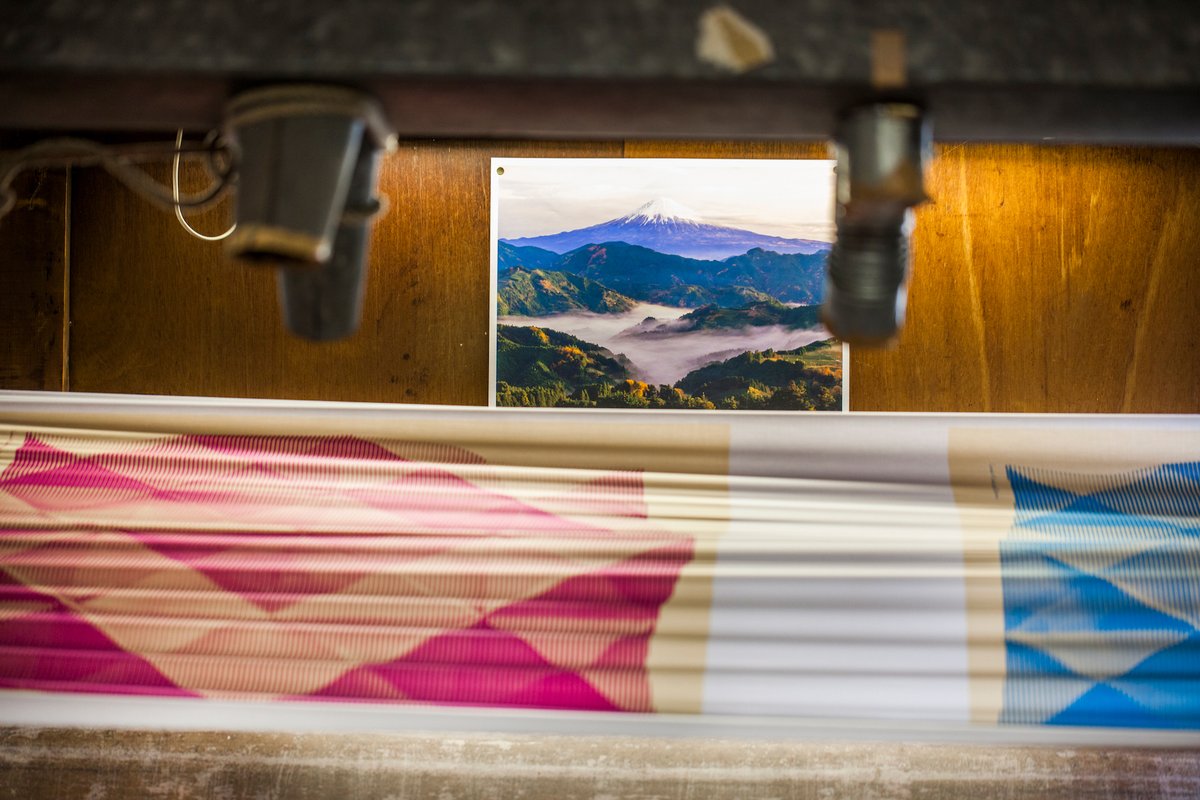 Link Furoshiki before cutting
Link Furoshiki before cutting
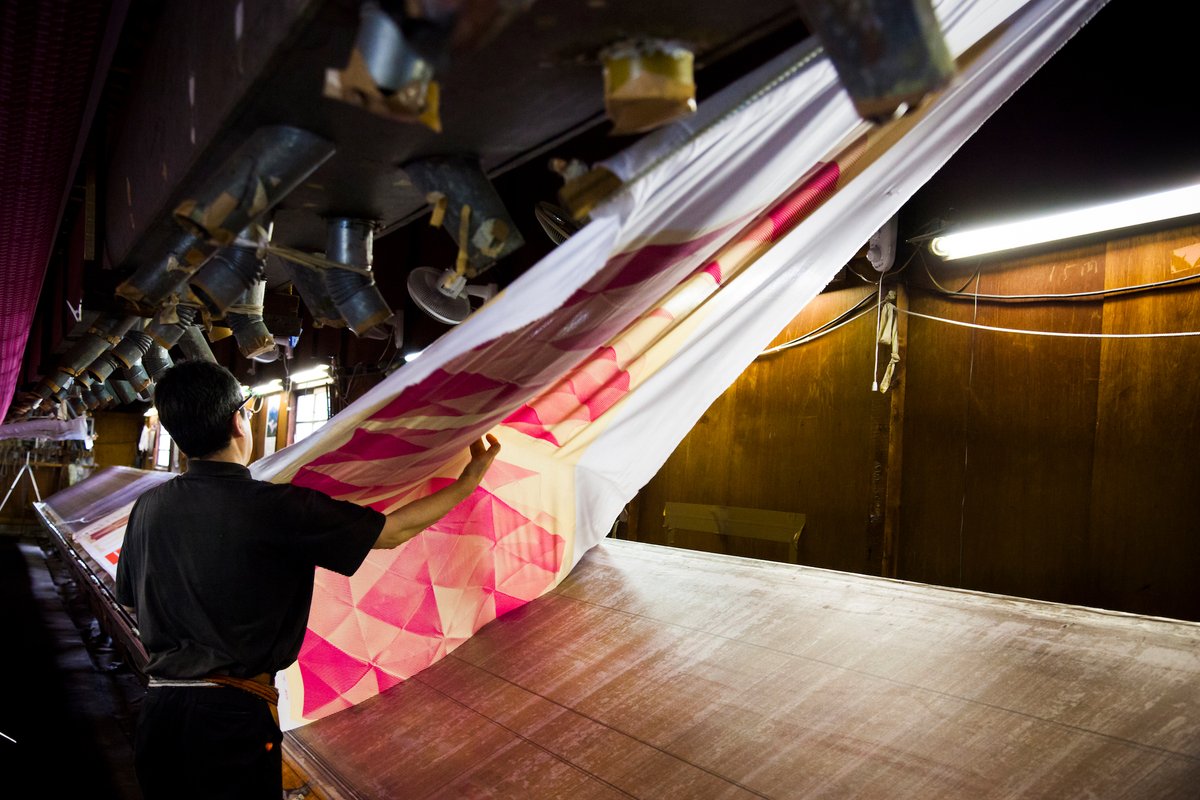 Drying Link Furoshiki after printing
Drying Link Furoshiki after printing
Sewing, folding and packing
After the towels are cut the right size, the edges are sewn by hand, to increase durability and avoid fraying.
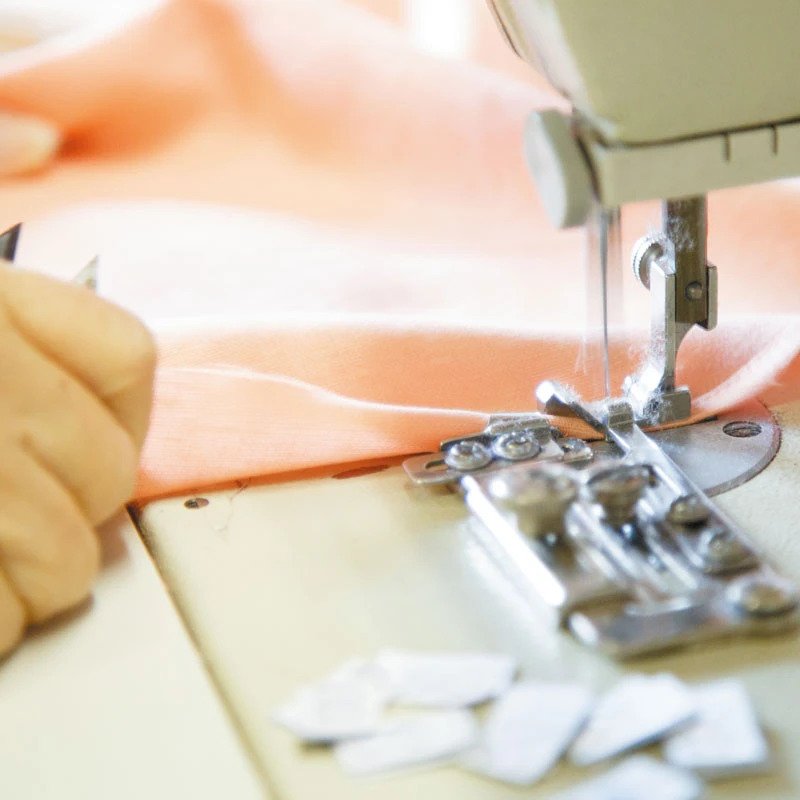 Sewing the edges of a Furoshiki
Sewing the edges of a Furoshiki
The towels are neatly folded and wrapped up with a paper belt, ready for shipping. The packaging doubles as a simple guide which shows the basics of how to use Furoshiki.
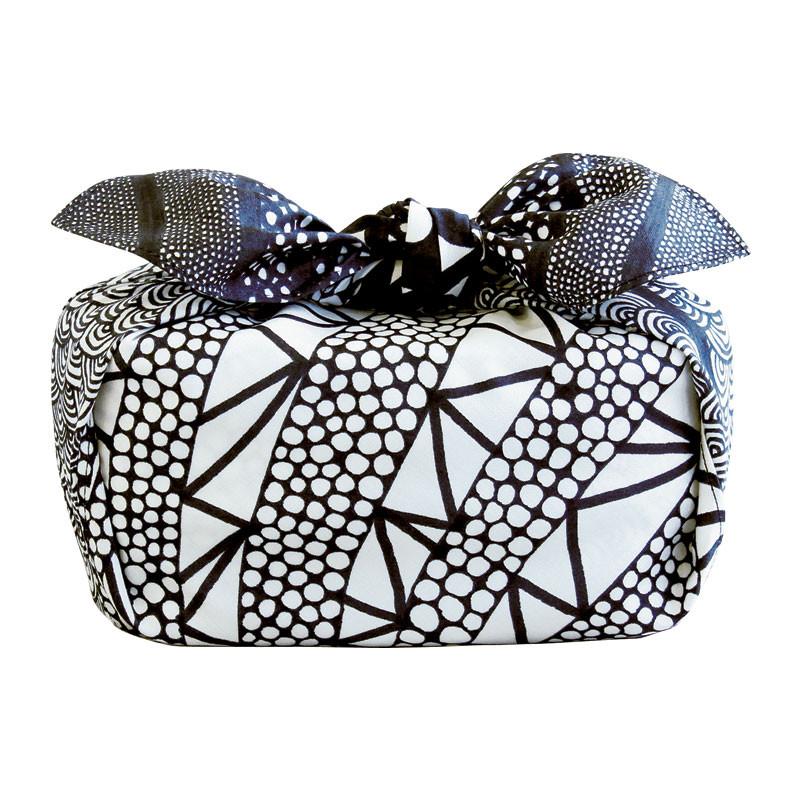
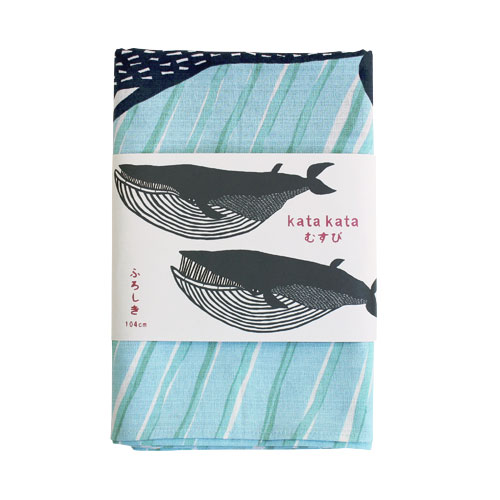
The Furoshiki are finally ready for their adventures to wrap and carry. Many of the Furoshiki shown above are available in our shop. Dive into the world of Furoshiki and explore our large collection of original Japanese Furoshiki and accessories.



